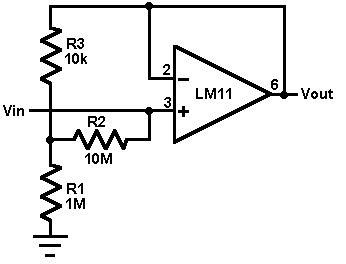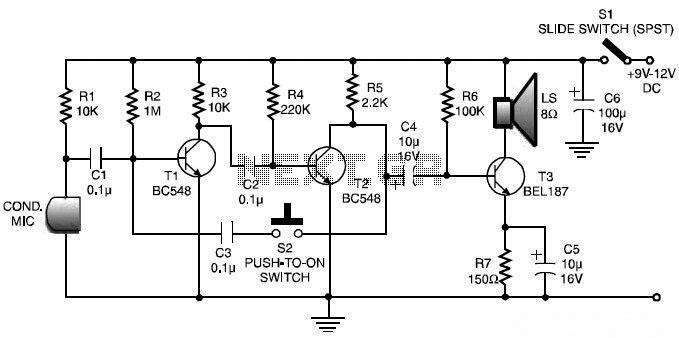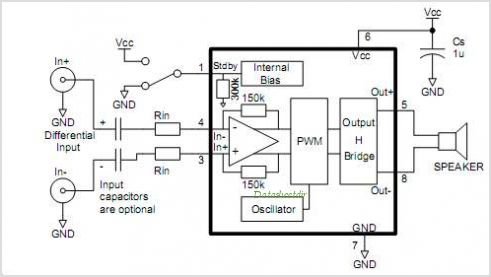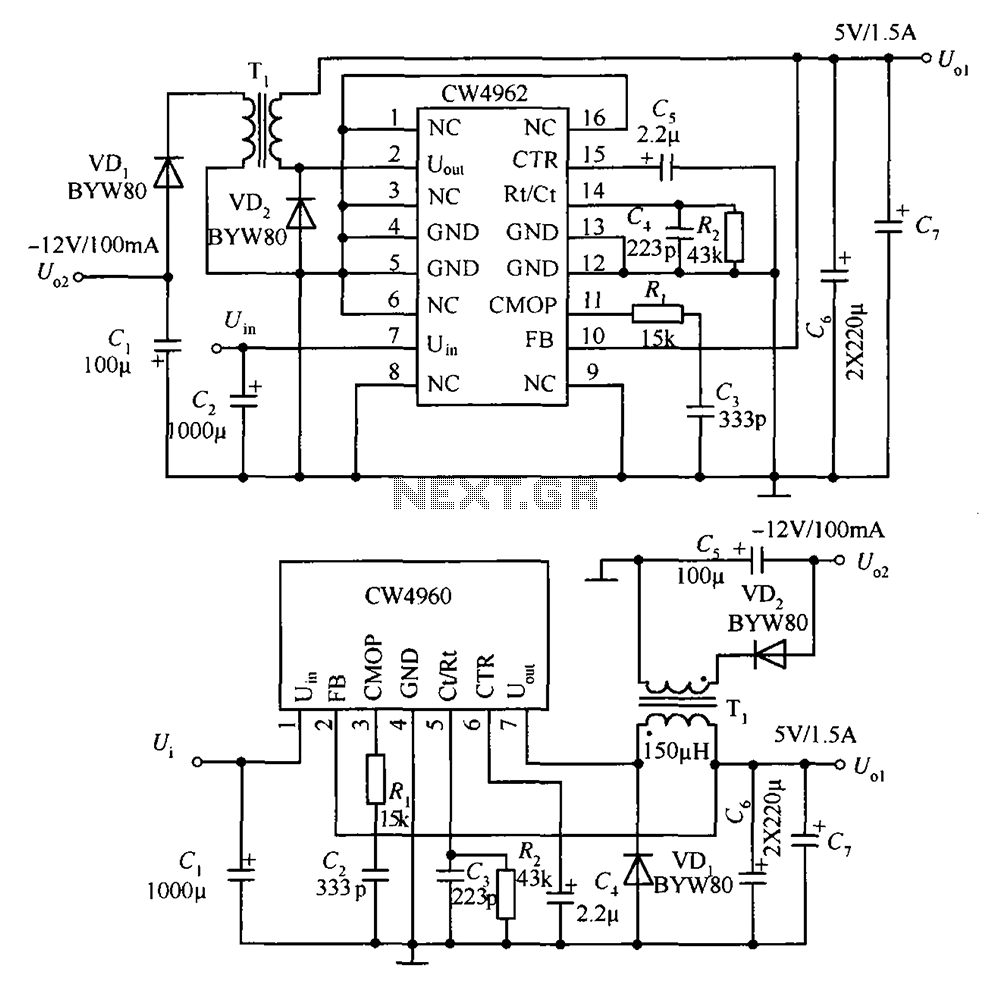
Triac low output problem

The circuit consists of two separate 3023 optoisolators controlling two distinct triacs, each responsible for powering a large 3-phase contactor. One contactor operates correctly, while the other experiences issues, not receiving sufficient power to engage fully. The upper image illustrates the waveform from the functioning triac circuit, whereas the lower image depicts the problematic one, which appears to drop out immediately after reaching peak positive voltage. The triac is intended to turn off only when the current crosses zero. Since a coil is being driven, it is possible that the current drops to zero at the moment the voltage decreases. Measuring the load current with an oscilloscope would provide clarity on this issue. The problem may stem from an inadequate gate pulse duration. If a pulse is being applied to the triac gate, extending its duration to approximately 90% of the AC cycle may be necessary. A PSIM schematic indicates that with a control duty cycle of 0.7, the observed waveform occurs. Increasing the duty cycle to 0.8 resolves the issue, allowing the load to receive the full sinusoidal voltage. Knowledge of the actual circuit parameters is essential for accurate troubleshooting. The logic input originates from a custom controller IC, which manages two 120VAC heaters by reading voltages across thermistors and determining temperature setpoints. The stability of the logic input to the optoisolator needs verification, as fluctuations in the 5 VDC supply could potentially affect the triac's performance without impacting the rest of the logic. The circuit for the other contactor functions properly, suggesting that the values of the components influencing the photodiode current and triac gate signal might be at their limits. The timing of the triac's activation in relation to the AC voltage cycle could also lead to transient DC offsets.
The circuit design employs two 3023 optoisolators to provide electrical isolation between the control signals and the high-voltage components, ensuring safety and preventing interference. Each optoisolator is connected to its respective triac, which serves as a switch for the 3-phase contactors. The optoisolators allow for low-voltage control signals from the custom controller IC to manage the higher voltage requirements of the heaters.
The functioning triac circuit demonstrates a stable operation, indicated by the waveform captured in the upper image. In contrast, the malfunctioning triac circuit exhibits a significant drop in voltage immediately after reaching peak positive voltage, suggesting that the triac may not be receiving adequate gate drive current. This behavior could be attributed to a short gate pulse duration, which may not be sufficient to keep the triac in a conductive state throughout the AC cycle.
To address this issue, it is recommended to analyze the gate pulse duration and ensure it is extended to cover a substantial portion of the AC cycle. A pulse duration of approximately 90% of the AC waveform could help maintain triac conduction, especially when driving inductive loads such as coils.
The PSIM simulation results indicate that adjusting the control duty cycle can significantly impact the performance of the triac. With a duty cycle of 0.7, the output waveform shows undesirable characteristics, while increasing the duty cycle to 0.8 allows for a complete sinusoidal waveform, indicating that the load receives the necessary power for proper operation.
Further investigation into the stability of the logic input to the optoisolator is necessary, as any fluctuations in the 5 VDC supply might affect the operation of the triac without influencing the overall logic circuit. Ensuring a stable power supply and checking the integrity of the components involved in generating the gate signal are critical steps in troubleshooting the circuit.
In summary, the successful operation of the circuit hinges on the careful management of gate pulse duration, duty cycle adjustments, and the stability of the control signals. Understanding the interplay between these factors will be essential for resolving the issues observed with the non-functioning triac circuit.The circuit is two separate 3023 optoisolators driving two separate triacs, each one powering a large 3-phase contactor. One contactor is engaging fine. The other one is rattling badly because it isn`t getting full power to pull in. The top photo shows trace from the good triac circuit, working fine. Bottom photo shows the bad one. It looks like t he triac is dropping out right after hitting peak positive voltage. Thanks for any help. I`m a first time poster who is in over his head on a repair - really more of a mechanical guy than an electrical expert. (I`d be happy to trade mechanical advice!) The triac should only turn off when the current passes through zero.
Since you are driving a coil, maybe the current passes through zero where you see the voltage drop. To be sure you would need to measure load current too (on a scope). As you can see from the attachment I can simulate something very much like the result you are seeing. The problem arises from too short a gate pulse. If you are applying a pulse (y/n ) to the triac gate you may need to make it longer - say 90% of the AC cycle in duration.
As you can see from the attachment I can simulate something very much like the result you are seeing. The problem arises from too short a gate pulse. If you are applying a pulse (y/n ) to the triac gate you may need to make it longer - say 90% of the AC cycle in duration.
The load voltage. The PSIM schematic used is attached. I guessed the circuit values. With a control duty cycle of 0. 7 I obtain the waveform indicated earlier. With the duty cycle increased to 0. 8 the problem vanishes and the load has the full sinusoid imposed. One would have to know the actual circuit parameters to correctly advise the OP. The load voltage. The PSIM schematic used is attached. I guessed the circuit values. With a control duty cycle of 0. 7 I obtain the waveform indicated earlier. With the duty cycle increased to 0. 8 the problem vanishes and the load has the full sinusoid imposed. One would have to know the actual circuit parameters to correctly advise the OP. Thanks for the help. The logic input is driven from a custom controller IC. Its outputs control two 120VAC heaters. The controller is reading voltage across two thermistors, reading some jumpers to determine the temperature setpoint, and then driving the optoisolator. I didn`t think to check the stability of the logic input to the optoisolator. I don`t know why the controller would be pulsing that line, but I`ll check it. Could ripple in the 5 VDC supply cause enough variation to throw off the triac but not the rest of the logic The identical circuit for the other contactor works fine.
Thanks for the help. The logic input is driven from a custom controller IC. Its outputs control two 120VAC heaters. The controller is reading voltage across two thermistors, reading some jumpers to determine the temperature setpoint, and then driving the optoisolator. I didn`t think to check the stability of the logic input to the optoisolator. I don`t know why the controller would be pulsing that line, but I`ll check it. Could ripple in the 5 VDC supply cause enough variation to throw off the triac but not the rest of the logic The identical circuit for the other contactor works fine.
The values of the components that determine the photodiode current and gate signal to the triac may just be at the limit. This is why one circuit can work and the other not. It doesn`t need to be necessarily a problem with a defective component. It depends at what point in the AC voltage cycle the triac is turned on as to whether you have a transient DC offset.
Do you recollect your circuit theory transient analysis studies from the old days It depends at what point in the AC voltage cycle the triac is turned on as to whether you have a transient DC offset. Do you recollect your circuit theory transient analysis studies from the old days 🔗 External reference
The circuit design employs two 3023 optoisolators to provide electrical isolation between the control signals and the high-voltage components, ensuring safety and preventing interference. Each optoisolator is connected to its respective triac, which serves as a switch for the 3-phase contactors. The optoisolators allow for low-voltage control signals from the custom controller IC to manage the higher voltage requirements of the heaters.
The functioning triac circuit demonstrates a stable operation, indicated by the waveform captured in the upper image. In contrast, the malfunctioning triac circuit exhibits a significant drop in voltage immediately after reaching peak positive voltage, suggesting that the triac may not be receiving adequate gate drive current. This behavior could be attributed to a short gate pulse duration, which may not be sufficient to keep the triac in a conductive state throughout the AC cycle.
To address this issue, it is recommended to analyze the gate pulse duration and ensure it is extended to cover a substantial portion of the AC cycle. A pulse duration of approximately 90% of the AC waveform could help maintain triac conduction, especially when driving inductive loads such as coils.
The PSIM simulation results indicate that adjusting the control duty cycle can significantly impact the performance of the triac. With a duty cycle of 0.7, the output waveform shows undesirable characteristics, while increasing the duty cycle to 0.8 allows for a complete sinusoidal waveform, indicating that the load receives the necessary power for proper operation.
Further investigation into the stability of the logic input to the optoisolator is necessary, as any fluctuations in the 5 VDC supply might affect the operation of the triac without influencing the overall logic circuit. Ensuring a stable power supply and checking the integrity of the components involved in generating the gate signal are critical steps in troubleshooting the circuit.
In summary, the successful operation of the circuit hinges on the careful management of gate pulse duration, duty cycle adjustments, and the stability of the control signals. Understanding the interplay between these factors will be essential for resolving the issues observed with the non-functioning triac circuit.The circuit is two separate 3023 optoisolators driving two separate triacs, each one powering a large 3-phase contactor. One contactor is engaging fine. The other one is rattling badly because it isn`t getting full power to pull in. The top photo shows trace from the good triac circuit, working fine. Bottom photo shows the bad one. It looks like t he triac is dropping out right after hitting peak positive voltage. Thanks for any help. I`m a first time poster who is in over his head on a repair - really more of a mechanical guy than an electrical expert. (I`d be happy to trade mechanical advice!) The triac should only turn off when the current passes through zero.
Since you are driving a coil, maybe the current passes through zero where you see the voltage drop. To be sure you would need to measure load current too (on a scope). As you can see from the attachment I can simulate something very much like the result you are seeing. The problem arises from too short a gate pulse. If you are applying a pulse (y/n ) to the triac gate you may need to make it longer - say 90% of the AC cycle in duration.
As you can see from the attachment I can simulate something very much like the result you are seeing. The problem arises from too short a gate pulse. If you are applying a pulse (y/n ) to the triac gate you may need to make it longer - say 90% of the AC cycle in duration.
The load voltage. The PSIM schematic used is attached. I guessed the circuit values. With a control duty cycle of 0. 7 I obtain the waveform indicated earlier. With the duty cycle increased to 0. 8 the problem vanishes and the load has the full sinusoid imposed. One would have to know the actual circuit parameters to correctly advise the OP. The load voltage. The PSIM schematic used is attached. I guessed the circuit values. With a control duty cycle of 0. 7 I obtain the waveform indicated earlier. With the duty cycle increased to 0. 8 the problem vanishes and the load has the full sinusoid imposed. One would have to know the actual circuit parameters to correctly advise the OP. Thanks for the help. The logic input is driven from a custom controller IC. Its outputs control two 120VAC heaters. The controller is reading voltage across two thermistors, reading some jumpers to determine the temperature setpoint, and then driving the optoisolator. I didn`t think to check the stability of the logic input to the optoisolator. I don`t know why the controller would be pulsing that line, but I`ll check it. Could ripple in the 5 VDC supply cause enough variation to throw off the triac but not the rest of the logic The identical circuit for the other contactor works fine.
Thanks for the help. The logic input is driven from a custom controller IC. Its outputs control two 120VAC heaters. The controller is reading voltage across two thermistors, reading some jumpers to determine the temperature setpoint, and then driving the optoisolator. I didn`t think to check the stability of the logic input to the optoisolator. I don`t know why the controller would be pulsing that line, but I`ll check it. Could ripple in the 5 VDC supply cause enough variation to throw off the triac but not the rest of the logic The identical circuit for the other contactor works fine.
The values of the components that determine the photodiode current and gate signal to the triac may just be at the limit. This is why one circuit can work and the other not. It doesn`t need to be necessarily a problem with a defective component. It depends at what point in the AC voltage cycle the triac is turned on as to whether you have a transient DC offset.
Do you recollect your circuit theory transient analysis studies from the old days It depends at what point in the AC voltage cycle the triac is turned on as to whether you have a transient DC offset. Do you recollect your circuit theory transient analysis studies from the old days 🔗 External reference




%2BCircuit%2Bdiagram%2Busing%2BCD4047%2Band%2BIRFZ44%2Bpower%2BMOSFET.png)
